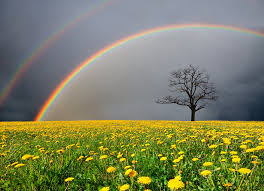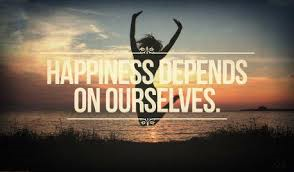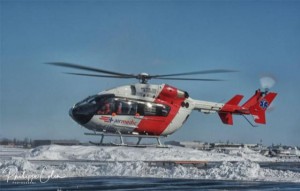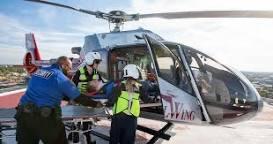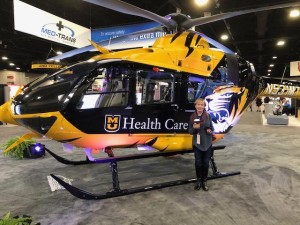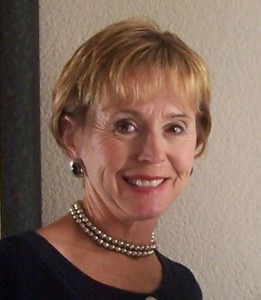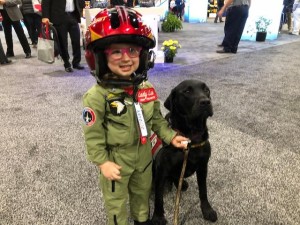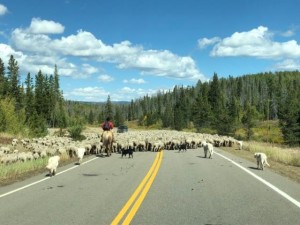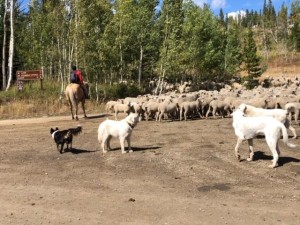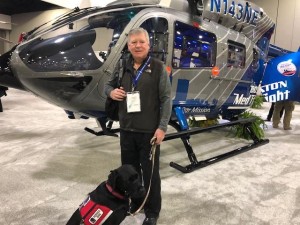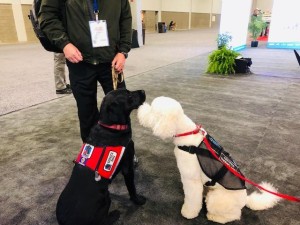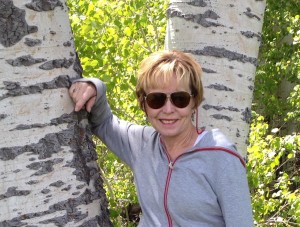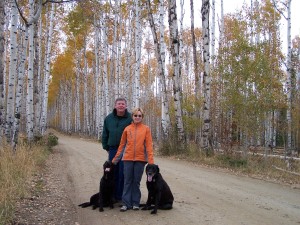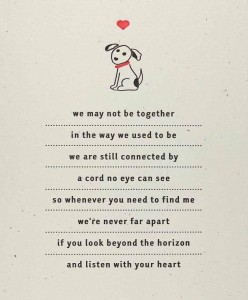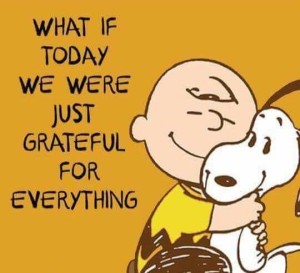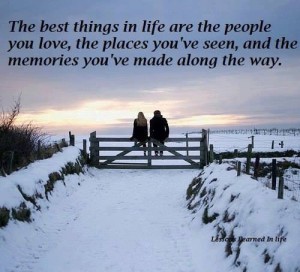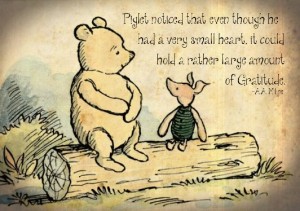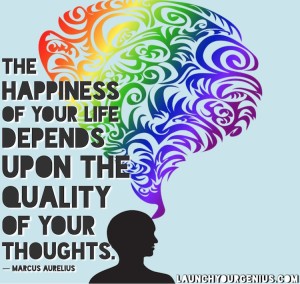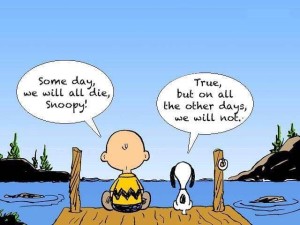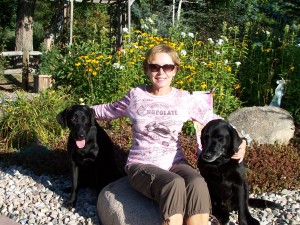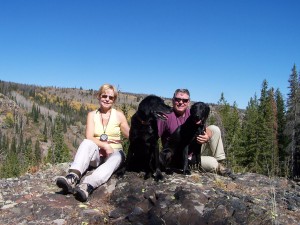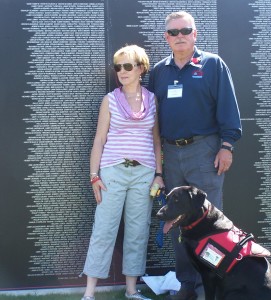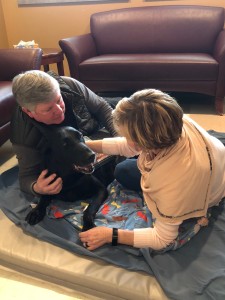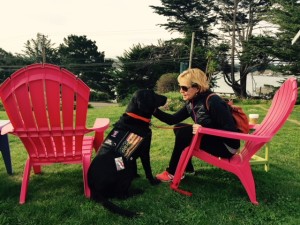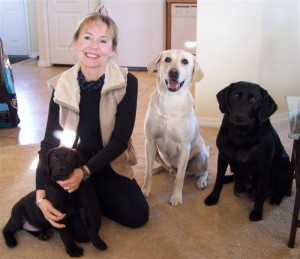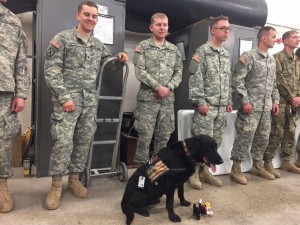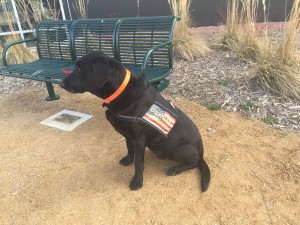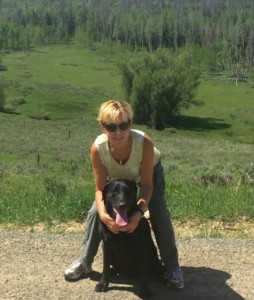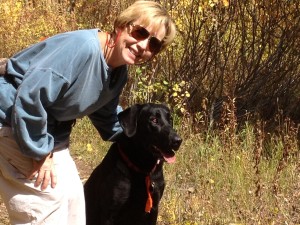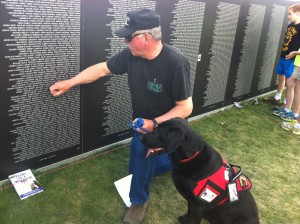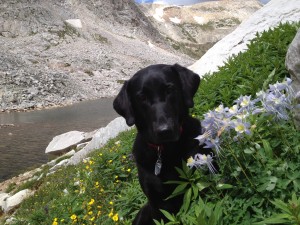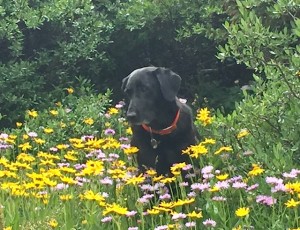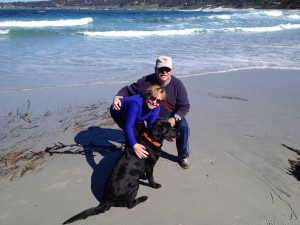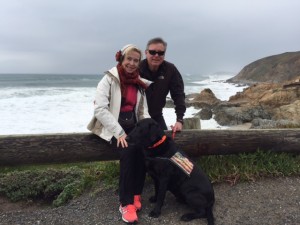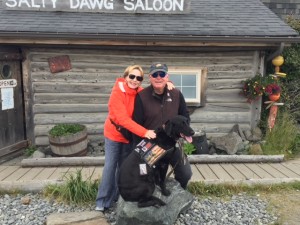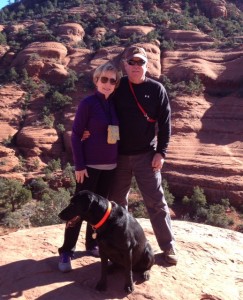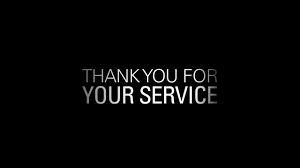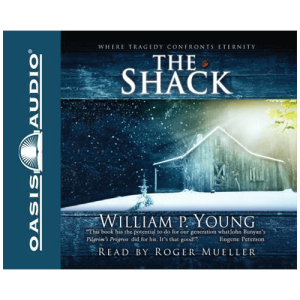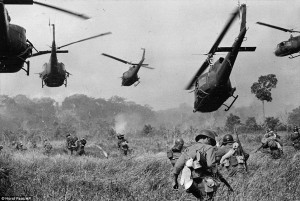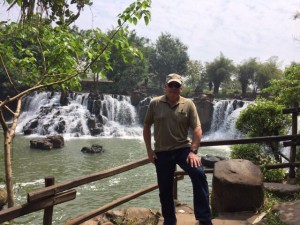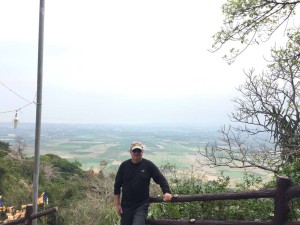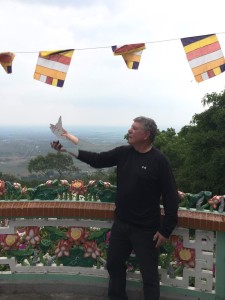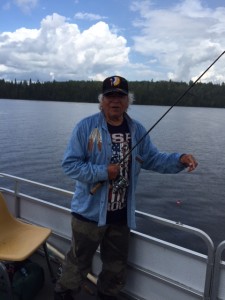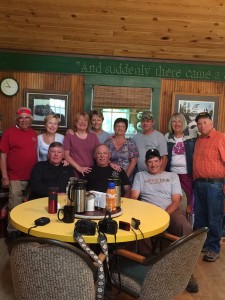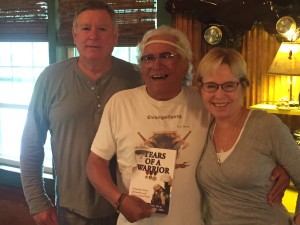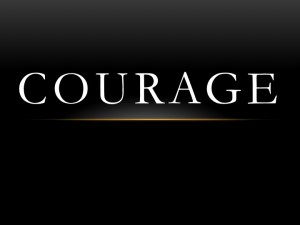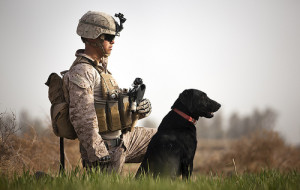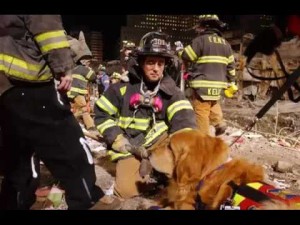Jul
26
THE RAINBOW CONNECTION
Filed Under Blessings, Coronavirus, Courage, COVID-19, Faith, Family, Grateful, Gratitude, Happiness, Healing, Hope, Peace, Tears, Tears of a Warrior, Tears of Joy, Veterans | Comments Off on THE RAINBOW CONNECTION
By Janet J. Seahorn, Ph.D.
How many of you remember the song, Rainbow Connection, by my favorite green frog, Mr. Kermit? In a time of necessary isolation and separation we need to work hard to find ways to connect to each other. Kermit’s song, Rainbow Connection, got me thinking about my own Rainbow Connection. Covid19 has attacked almost every part of our daily existence… our relationships, our jobs, our food sources, our medical care, schools – and the list seems endless. Struggling to maintain any semblance of our pre-covid lives can be exhausting. Grasping to stay attached to our family, friends, coworkers, neighbors can be an emotional combat zone.
During a storm the clouds gather, the skies darken, and often times the winds howl horrifically. Eventually rain falls, sometimes lightly and sometimes with the force of pelting water bullets that turn into huge hailstones. Yet, after the storm – if we are lucky and continue to look beyond the gale an amazing rainbow appears. The fractions of light bounce off each raindrop reflecting astonishing and breathtaking colors as a promise of the possibility for new beginning and fresh new starts.
Our tears can be a bit like these raindrops, but the various colors may only be seen in our own minds and hearts. We experience the colors of grief, of fear, loneliness and anxiety. However, there are also colors of hopefulness, courage, joy, love and clearer skies in the future. What lessons are we learning about each other? Ourselves? Are we able to see ALL of the rainbow or only a small part?
The other day I came across a quote by Haruki Murakami,
“When you come out of the storm you won’t be the same person who walked in. That’s what this storm’s all about.”
In the song, Kermit talks about being a Lover, a Dreamer, and Me… and the voices calling your name. Perhaps these new voices are what you hear after or even during the storm. Are you listening? There is magic in rainbows and we can, if we choose, linger under the glorious and colorful spell of its Vision. If we look for what may be on the other side, perhaps we can keep that Lover, that Dreamer in us and connect it to others. Perhaps we are that Rainbow Connection and we are a bit better after the storm than before we went into it.
May
11
TRAUMA AND GROWING BRAVE
Filed Under Coronavirus, Courage, COVID-19, Grateful, Gratitude, Happiness, Hospital, Tears, Tears of a Warrior | Comments Off on TRAUMA AND GROWING BRAVE
By Janet J. Seahorn, Ph.D.
A few weeks ago I wrote a short article on “You Can’t Quarantine Joy”. Little did I know a few weeks later those words would need to not just be remembered but practiced. They would haunt and humble me. You see, I ended up back in the hospital after several ER visits. Luckily I only had pneumonia… Ha, Ha…. Only pneumonia and other “stuff” they couldn’t diagnosis. When first admitted I had to spend several hours on the coronavirus ward waiting for my tests results to show that I was safe to be transferred to a “normal” room. The doctors and nurses were in their protective gear. The room’s window had been sealed off with a special fan attached that allowed no outside pathogens to escape to the outside environment.
After being transferred to the “safer” ward, I had days to think about my situation and the state of the world. Watching TV was not an option. The news was too grim. My grandmother used to say “an idle mind is the devil’s workshop”. It isn’t – it’s more like Dante’s Inferno. The mind takes you to places you absolutely don’t want to visit. It took every ounce of my energy to try and keep a positive mindset, count my blessings and maintain some form of emotional stability as my body was far from feeling positive.
For those out there, both patient and supporters, here are some things to understand, to consider. First trauma does some interesting things to the mind and body. It changes you whether you want it to or not. Like a teapot that is designed to let off steam when the water in the pot becomes too hot – we are built in a similar way. When we get too overwhelmed we need time and space to let out some steam. We need space to scream, shout, cry uncontrollably. We need our own inner self to process what we’ve been through, to grieve our physical losses and our emotional sufferings. The energy it requires to constantly stay upbeat takes its toll and becomes crushing. We need moments to recognize and acknowledge that we’ve been through something horrible and we had to do it alone… in a lonely hospital room with no loved one by our side.
Therefore, wonderful and loving supporters don’t try to talk a suffering soul out of his/her trauma. It is their journey to process it, to deal with the grief and horror of it, to move forward. Please don’t say to the suffering “you’ve got to stay positive… you’ve got to count your blessings….” Do you think for a moment that we don’t know this, that we aren’t already doing this? Trust me, we would be happy to have amnesia, wave a magic wand and make all the crap disappear. Those words of support only make many of us feel guilty, weak, and ashamed to have these feelings. It’s absolutely exhausting to pretend we are great just because we survived. Give your loved one the gift of a few minutes each day to just BE. To understand and accept what we’ve been through. Many of us choose to do this in private, in the quiet of our own thoughts and hearts. What we need from you is trust. Trust we will get through what we need to get through. Trust that weeping and screaming are just a part of our wounded body and spirit’s healing process. Recognize that part of the trauma may always be a part of us, of our life experience. Trust we will be OK. You don’t have to talk us through anything. We just need you to be present, to listen, to hold our hand. Probst once said, “We do not receive wisdom, we discover wisdom within ourselves only after a journey that no one can take for us or with us.”
For all of us, remember we are stronger than we think. We grow braver through our challenges. We become more compassionate, more grateful, again, not because of what we may have lost but because of what we have endured and learned. It is good to be like that teapot, knowing we can let off steam when needed and the infusion of our tea tears become sweeter, more poignant.
And through our trauma, we do grow braver.
Thank you to all of our first responders, medical personnel, people keeping our grocery stores open and many others. There aren’t enough words to express the difference you are making every day.
Nov
27
TRAUMA AND FIRST RESPONDERS
Filed Under Courage, Events, First Responders, Healing, Life, PTS, PTSD, Service Dogs, Stress, Tears of a Warrior, Trauma | Comments Off on TRAUMA AND FIRST RESPONDERS
By Janet J. Seahorn, Ph.D.
Two weeks ago Tony, Trooper, and I had the honor of being part of the annual Air Medical Transport Conference (AMTC) in Atlanta, Georgia. This conference was attended by pilots, flight crews, physicians, nurses and first responders from all over the world. The convention was filled with individuals who have given and continue to give much of their lives to saving and helping others. Many have served in the military, and many have been overseas in combat zones. To say they are an inspiration to our communities is an understatement. We were able to meet and talk with several individuals who shared their stories with such humility and purpose dedication. Like our military, these first responders serve their communities with courage and tenacity. They are with others at the most traumatic time of life. They comfort, attend to injuries, and all too many times are the last person a victim sees at the time of death.
I was asked to be the keynote speaker for this amazing group. Of course, my presentation was on trauma and how it affects both our minds, bodies, and spirits. It was the first time a keynote speaker at this event was requested to speak on the topic of trauma and Post-Traumatic Stress (PTS). As in countless organizations, Post-Traumatic Stress is often the elephant in the room that most don’t want to discuss and sometimes even acknowledge. Its presence is seen and felt, yet, little is done to heal and attend to the many traumatic experiences our first responders deal with every day.
To say I was both incredibly nervous and honored to be the keynote is an underestimation of my concerns. I researched, practiced, and prayed for several months prior to the event hoping that the information in the keynote would make a difference to those attending.
I used the analogy of a “sheepdog”. In September we were in Steamboat Springs, CO and watched a mixture of nine Border Collies, Great Pyrenees and Akbash sheepdogs meander behind their one-thousand herd/flock of sheep as they moved from summer range in the National Forest. These dogs are incredibly protective of their herd – keeping the herd together and fighting off predators at the peril of their own lives. They look so normal in their big, furry, white bodies, but make no mistake; they are ferocious in the task of watching over their sheep. Our first responders are like these sheepdogs. They protect, tend to, and put their lives at risk for their communities. The question I raised, just like with our military and veterans, who takes care of the sheepdogs?
As a society, it is our duty to make sure those who take care of us are taken care of as well. They see, hear, touch, smell, and feel events that most of us will never encounter. The burdens they carry are too often only theirs and held in the silence of their minds and hearts. Like our military and veterans many believe that if they are traumatized by their experiences, they are somehow inadequate, less fearless, and not as capable of doing their jobs. This is totally inaccurate. One cannot function in a career of trauma without having some effects on his/her own well-being. In fact, this is what makes them more compassionate and effective at their jobs.
A few statistics I learned while doing my research:
- 34% of first responders have Post-Traumatic Stress;
- Barely half of first responders have had any training into how to deal with their own trauma;
- Much like our military, first responders have a much higher suicide rate than the average population;
- Female critical nurses in ICU and flight nurses are four times more likely to developed ovarian cancer than their peers;
These are just a few of the statistics that should make us all concerned and ready to share the responsibility of taking care of those who take care of us.
Just like our military and veterans – “If we send them, then we MUST mend them.”
KEYNOTE SPEAKER:
Janet J. Seahorn, Ph.D.
Dr. Seahorn has been a classroom teacher and administrator for forty years. She has taught as an adjunct professor for Colorado State University and several universities in the Denver area. For the last ten years she has been teaching a class on Neuroscience and Learning at Colorado State University. Jan has a BA in English/Elementary Ed., an endorsement/license in middle school education and administration, a MA in Gifted and Talented, and a Ph.D. in Human Development and Organizational Systems. Her background includes an in-depth understanding of neuroscience research and effective instructional practices, organizational systems and change. She conducts numerous workshops on the Neuroscience of Learning & Memory Systems and the effects of “at-risk” stress environments on brain development.

Dr. Seahorn co-authored the award-winning book with her husband, Tears of a Warrior: A Family’s Story of Combat and Living With PTSD. The theme focus is on trauma and how it can impact the brain, body, and emotional development of an individual. Much of the research focused on Post-Traumatic Stress (PTS) and understanding how to identify and work with first responders and veterans who have experienced trauma and associated stress. She and her husband Tony work extensively with military personnel, veterans, first responders and families on how trauma impacts the brain. She also works with schools and communities on how trauma experienced in childhood through abuse, neglect, and other environmental conditions impact learning and behavior.
She has written two other books, When Crap Happens Grow Zucchini: A Book on How to Live with Dying and Appreciate the Crap
Foul Wisdom: Identifying the Turkeys and Eagles in your Organization and Life
A third illustrated book on her PTSD poem, Silent Scream, is currently in production.
Dr. Seahorn’s TED Talk on post-traumatic stress can be viewed on You tube: https://www.youtube.com/watch?v=BEHDQeIRTgs&feature=youtu.be
Janet and Tony have two adult sons, Chad and Christopher who enjoy living and working in the Rocky Mountain Region. Tony & Janet share their home with two Black Labradors, Trooper – a certified service dog, and Brody, a puppy being trained as a therapy dog to work in children’s court systems, hospitals, and schools. The family enjoys travel and outdoor activities: history, geography, hiking, fly-fishing, rafting, snow skiing and anything that puts them in touch with nature. Janet also volunteers with several animal shelters in Colorado.
Mar
1
Settling into the Year 2018
Filed Under Aging, American Patriotism, Bless Our Troops, Courage, Dog is God, Dogs, Family, Happiness, Happy New Year, Journey, Love, Service Dogs, TBI & PTSD, Tears, Tears of a Warrior, Veterans | Comments Off on Settling into the Year 2018
by Janet J. Seahorn, Ph.D
Now that we’re well into the New Year, and thinking about moving forward into a year of fresh beginnings. Remembering and preserving old friendships, being aware and grateful for an abundance of goodness, people, health and purposeful work that occupy our days can offer a sense of optimism. Yet, most important, having a richness of love in our lives – love of family (yes, even those that sometimes drive us nuts), love (and loss) of endearing pets, love of neighbors and friends, and love of something within and above us that help to guide us through the darkness.
For some that light may be almost infinitesimal dim. Bob Woodruff, a well-known journalist and author who suffered a devastating brain injury from an IED while covering the military in Iraq wrote in his book “In an Instant“, “First you must touch the black and then go back up to the light.” It was his way of “acknowledging that you have to let the fear in, but to dwell on the fear will only cripple you. You need to move back into a world of hope.”
There is no denying that 2017 was a year of great challenges and loss for many, and 2018 hasn’t been easier with the recent death of our beloved service dog, Bailey. Family members, treasured pets and very dear friends are no longer with us. Saying goodbye has never been easy even when we recognize that it is for the best (at least for that loved one).
However, we are trying hard to center on the plentiful blessings in our lives. The old saying, “It is just as easy to focus on being positive as it is to be negative”, every so often can seem like a big bowl of crap. Advice to the reader – listening can be more important than trying to comfort an individual by making comments such as “Suffering builds character”. I’ve never believed that old cliché. I think suffering reveals character more than builds it. Sometimes, we simply need to allow ourselves and others to grieve, to be sad, and to nurture our physical and emotional selves.
Nonetheless, I still believe that life is worth the time to live fully and with resolve. I still believe that most people are generous and decent. I still believe that compassion trumps unkindness and hate generates more cruelty in a world already filled with too much bitterness. I still believe that truth is more important than ever to counteract the deceit and false narratives of which others try to convince us. And, more than ever, I still believe in hope, for without hope it would be hard to wake up each morning with a sense of joyfulness.
Lastly, for our veterans, first responders and their families we wish you a year filled with peace, prosperity, and well-being.
You’ve sacrificed enough.
Daily count your blessings and know how precious those special moments can be.
Now it’s time to enjoy an exceptionally amazing New Year.
Feb
25
IN MEMORY OF HUNTER BAILEY
Filed Under Aging, American Patriotism, Bailey, Courage, Dog is God, Dogs, Family, Heroes, Love, Pets, PTSD, Service Dogs, Tears of a Warrior, Veterans, War Dogs, Wounded Warriors | Comments Off on IN MEMORY OF HUNTER BAILEY
by Janet J. Seahorn, Ph.D
HUNTER BAILEY of FARGO
11/29/2006 – 02/23/2018
Mar
26
Healing From The Wounds Of War
Filed Under Black Lions, Combat PTSD, Courage, Healing, Military, Pain, Peace, Return To Vietnam, Tears of a Warrior, Trauma, Veterans, Vietnam Today, War | Comments Off on Healing From The Wounds Of War
Two Quotes from Rumi:
(Rumi was a 13th-century poet of immense talent. His work highlights the power of literature in its ability to transcend time, language and geographic locations)
1) Healing doesn’t mean the damage never existed. It means the damage no longer controls our lives.
2) The wound is the place where the light enters you.
Mar
26
GETTING UNSTUCK
Filed Under Black Lions, Combat PTSD, Courage, Events, Faith, Family, Healing, Hope, Journey, Love, Pain, Peace, PTSD, Return To Vietnam, Tears of a Warrior, Veterans, Vietnam Today, War | Comments Off on GETTING UNSTUCK
by Janet J. Seahorn, Ph.D
It isn’t easy to move forward in life when you seem trapped by events that happened in the past. Often times the harder you try to get unstuck, the more bound you become to that very past. So how does one resolve such a dilemma? It probably won’t be without effort, time, and even some painful moments.
In the book/movie, The Shack, the lead character is tormented by an unimaginable personal tragedy. No matter how hard he tries to move forward beyond his pain and horrendous memories, he can’t. Being caught in a terrible incident he is unable to see past his pain to the extent that very little joy or happiness can enter his life. In order to heal he is forced to go back to the place (the shack) where he got stuck; the place where the horror, the anguish, and the future was taken from him.
I think this is what Tony was doing when he decided to return to Vietnam. In order to heal more completely he made a choice to go back to the place where he became stuck, a space that over the last many decades unconsciously became his “shack”. Since his military service in Vietnam he has worked incredibly hard to move beyond the memories and the demons, but there were still times when the burden of combat obscured his vision and ability to live fully. As part of the healing process he had to exhume the old earth in order to plant and allow for new growth to occur. He will be explaining more in his future blogs.
Toward the end of the movie there was a beautiful metaphor about life. A truism that most of us already know…. life is not neat or precisely organized. It is messy, bumpy, and often unbalanced. Yet, it is this very assortment of messiness and disorder that make us who we are and who we can become if we are brave enough to return to our “shack” to become unstuck.
So what is your “shack”? What might you do to become “unstuck: (that doesn’t mean you have to physically return to a specific location to heal). Just know that this “becoming unstuck” will most likely not be easy, orderly, or without some deep potholes. It is a journey, like Tony, you may need to take alone. However, the reality is that you will not be totally on your own. Like Tony you will have the thoughts, prayers, and support of family and friends that will accompany you in spirit and hope.
Aug
25
VINCE THE PRINCE
Filed Under Courage, Faith, Fishing Therapy, Healing, Healing Waters, Journey, Life, Love, Military, Peace, PTSD, Rushing Wind, Tears of a Warrior, Wounded Warriors | Comments Off on VINCE THE PRINCE
By Janet J. Seahorn, Ph.D.
Once upon a time there was a very young boy who lived an incredibly difficult childhood. He was the oldest son of a family of five children – two younger sisters, one brother and a step brother. At eleven years old he became homeless, kicked out of his family by an abusive father. Drinking and beatings by his dad were endured on a regular basis. For five years he lived on the streets until he was old enough to join the army (1956-1965). Being of Navaho Indian decent, Vince the Prince was a fledgling warrior, and warriors always fight with perseverance and courage.
However, the trauma of his early childhood experiences followed him into the military. He was always in trouble, and believed he would get shot, knifed, or killed in prison. Life was pretty hopeless. Anger often consumed him, a normal coping mechanism many children of abuse use to mask their pain and unpredictable daily circumstances. But, Vince the Prince was a survivor, often called a “smart ass”. Being tough kept him alive, and being enraged kept him “feeling”.
How does a person ever survive such a life? According to Vince the Prince in 1970 he found faith in the spirit of the Lord, and this discovery saved him. Talking with him was pretty amazing as he could quote scriptures from the Bible better than most clergy. His personal commitment to the Lord handed him the hope that he lacked in his younger years and offered him a purpose in how he would live the rest of his life. In 1973 Vince was ordained as a street Evangelist. His parishioners were those confined to the jails and prisons in Chicago. He worked with the street people offering kindness, optimism, and faith. Having this new mission made him think of others before himself. He was no longer in the survivor mode, but in a vocation of serving those who, like him in his early years, were crushed by life experiences far beyond the control of a young boy. In 1983 he even completed his GED after having only a fifth grade education. Yep, pretty darn remarkable.
I asked him at the end of one of our conversations “What has been your greatest lesson?” His response, “No matter who or what you are, in God’s eyes you are precious.” And, ‘When all else fails turn to Jesus.”
Vince the Prince continues to work with young teens, many who are homeless like he was in his early years. Who better to understand their struggles, their fears, and their despair? Who better to provide a sense that no matter how dire your circumstances may seem there is always hope and that hope can lead to a miraculous future. Living life with purpose and a wicked sense of humor make Vince the Prince a very special human, indeed.
(I recently spent a week with Vince at a remote fishing camp in Canada called Rushing Wind. Tony and I were invited to work with veterans who have experienced the effects of combat and are finding ways to heal from the wounds of war.)
Listen peacefully to the wild call of the Loon.
Apr
29
Courage Revealed
Filed Under American Patriotism, Bless Our Troops, Combat PTSD, Courage, Dogs, Military, Post-Traumatic Stress "Injury", PTSD, Service Dogs, Tears of a Warrior, Trauma, Veterans, War Dogs, Wounded Warriors | Comments Off on Courage Revealed
by Janet J. Seahorn, Ph.D
It is easy to see what courage looks like. We observe it in the acts of those who, in spite of intense danger or inconceivable suffering, or endless determination, an individual continues to live on. To move forward. We see it in the movies where it makes us feel safe and in control in events we know we may never survive.
But what does courage sound like? Does it reveal itself in words, in songs, in other types of media? Perhaps real courage sounds like Silence. The silence of grief that cannot be expressed in words. The silence of a heart being shattered. The silence of hidden tears and silent screams.
And what does courage feel like? It may be different for every person, yet, individually it contains some singular similarities. Our feelings, much like hearing, is silent beyond ourselves. Emotions, an element of feelings, come at anytime, day or night. It cannot be quantified, perhaps because we may not be able to find a beginning or end in its infinitesimal existence. You see, feelings go beyond emotions. They are deeper, often jumbled together with anger, love, gratitude and sadness. We feel what we feel. Attempting to put feelings into words can be exhausting, exasperating, and mostly ineffective.
Courage, like feelings and hearing is also Silent. It is very much present. There is both a sweetness and bitterness in courage. The sweetness of living through a reality that many may never experience. The bitterness resulting from that very same experience. It is not about the “why me”, “how come”, or “what ifs” of suffering. Simply having the courage to accept the experience for what it is— an experience that changes a person from the before to the now – and beyond.
We spend too much time trying to define/identify courage. Most results are superficial at best. For if, as I believe, courage is found only in the Silence… the empty spaces between the noise and what is seen, heard, and felt. We often miss or mistakenly identify courage. Its potential seed lives in most of us, yet, it can only be germinated when or if the time presents itself. For some of you reading this piece may think, “What the heck is she rambling about?” For others, those who have lived the courage, you may only nod your head and silently say “true”.



